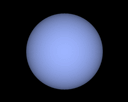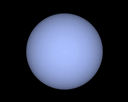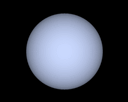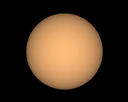
This page content and all the images have been developed and copyright by Richard Pogge of Ohio State University. It is reproduced here for your educational use with permission. Please respect his copyright.
Characteristics of the Stellar Spectral Types
O Stars

Hottest Stars: T>30,000 K; Strong He
+ lines; no H lines (or only very weak at O9).

Spectrum of an O5v star
B Stars

T = 11,000 - 30,000 K; Strong neutral He lines; very weak H lines, getting stronger from B0 through B9.


Spectra of B0v (top) and B5v (bottom) stars
A Stars

T = 7500 - 11,000 K; Strongest H lines, Weak Ca
+ lines emerge towards A9 types.


Spectra of A1v (top) and A5v (bottom) stars
F Stars

T = 5900 - 7500 K; H grows weaker through F9, Ca
+ grows stronger, weak metals begin to emerge.


Spectra of F0v (top) and F5v (bottom) stars
G Stars

T = 5200 - 5900 K; Strong Ca
+, Fe
+ and other metals dominate, H grows weaker through the class.


Spectra of G0v (top) and G4v (bottom) stars
K Stars

T = 3900 - 5200 K; Strong metal lines, weak CH & CN molecular bands begin to appear, growing through the class. H lines nearly gone.


Spectra of K0v (top) and K5v (bottom) stars
M Stars

Cool Stars: T = 2500 - 3900 K; strong molecular absorption bands particularly of TiO and VO emerge and strengthen, as do lines of neutral metals. Virtually no H lines anymore.


Spectra of M0v (top) and M5v (bottom) stars
L Stars

Coolest Stars: T = 1300 - 2500 K; strong molecular absorption bands particularly of metal hydrides and neutral metals like potassium, cesium, and rubidium. No TiO and VO bands.
[No spectra yet]
T dwarfs
?
T < 1300 K; very low-mass objects, not technically stars anymore because they are below the Hydrogen fusion limit (so-called "Brown Dwarfs"). Have cool Jupiter-like atmospheres strong in methane (CH4), water (H2O), and neutral potassium.
Comparison of Type V Dwarf Star Spectra

A stack of all of the spectral images showing how the spectral features change systematically from types O5v through M5v is shown on this page.
The spectra shown above are for real stars and run from 350nm to 740nm. I've taken digital scans of the spectra and "stretched" them into black-and-white images to mimic the photographic spectra used for many years for classification. The main difference between these images and photographic plates is that the latter did not generally extend as far into red wavelengths as modern CCD detectors. Putting two spectra close together like this shows clearly how the spectra change from the start to
the middle of the class.
The pictures of the stars are computer renderings of a glowing sphere with a color rendered approximately given its observed spectrum for that spectral type. The rendering was done by converting the spectrum into approximate computer RGB colors using the "CIE 1964 10-degree" color matching functions, using "sRGB" primaries and gamma function. The "white point" for the color conversion was set to the standard for sunlight (the "D65 white point"), hence a G2 star should appear white (with just
a hint of yellow). Not guaranteed to be 100% real, but about as close as I figure I can get and still get the basic idea of stellar colors across that stellar colors are rather subtle because their emissions span the entire visible spectrum. The "limb darkening" effect you see is based on a simple empirical limb-darkening law for the Sun.
![]()





















